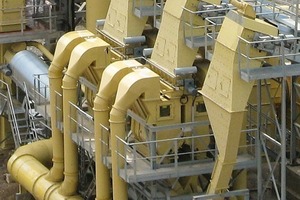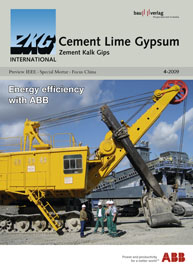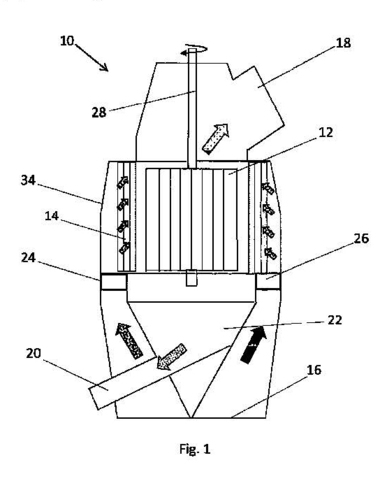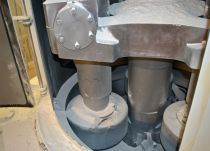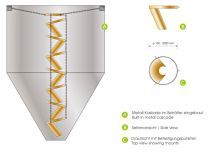Cascade classifier for cost-efficient reduction of filler
On the basis of many years of experience in the grading of various materials (including MDF fibers, sawdust, building and demolition waste, ballast and general refuse), a good few years ago Scheuch GmbH, of Aurolzmünster/Austria, developed a cascade classifier (Fig. 1) specifically for the removal of filler material in the gravel and ballast industry.
The first classifier applying this system has been in operation at the Gradenberg ballast plant in Austria since 2000; in the meantime a further ten machines have been supplied. Two cascade classifiers, which separate the fine-particled filler material of < 90 µm from the remaining material, are also in use at a gravel works in Algeria (Fig. 2).
The problem of sand grading
Due to abrasion in the crusher, on the screens and during conveyance, the extraction and processing of natural and crushed sand result in the production of fine dust. This fines fraction, with a particle size of less than 90 µm, is referred to as “filler”, or filler material, and generally amounts to between 15 and 25 % of the material flow. Since a filler content less than 10 down to 5 % is specified for many applications, it is necessary to reduce filler material content to meet this target.
The essential problem in the classification of sand is that of breaking down the agglomerates, i.e., the separation of the
fines from the coarse fraction and the achievement of a high separation accuracy between the coarse and the fine contents in the air flow. The selection of the air flow-rate is performed in this context on the basis of the so-called near-mesh grain size, by precisely matching the rate of ascent of the air flow to the rate of descent of the near-mesh particles. The near-mesh fraction is that particle size which is 50 % removed.
An important precondition for optimum filler-removal performance is that the moisture content of the sand should be less than 1.5 % – the higher the moisture content, the higher the adhering-grain content, and the higher the shearing forces necessary to detach the adhering grain. The most homogenous distribution of material and air possible across the entire width of the classifier is therefore the target for achievement of efficient separation and cost-effective operation.
Special cascade classifier: Operation
The material is generally fed via a conveyor-belt and a specially designed shuttle valve into the classifier from above. The shuttle valve ensures that as little leakage air as possible is able to enter the classifier, and that disruptive effects on separation accuracy are thus avoided. The material flows downward through a number of cascades. The air required for classifying is drawn in from below and blown at high velocity through the material in cross-flow by means of the cascades, which function as nozzles. This process generates high shearing forces, which detach the ultra-fine particles from the coarse fraction.
It is important after this stage to achieve uniform downward flow, in order to permit gravitational separation. The coarse fraction drops out of the classifier at the bottom via a shuttle valve, while the ultra-fine fraction is entrained upward with the current of air, fed to a dedusting system, and extracted via a rotary valve.
The particular advantage of this new development is its excellent separation performance and adjustable degree of filler material removal, from an original 25 % filler material content, for example, down to 10 % or, given corresponding boundary conditions, to even lower contents of around 5 %.
As an option, grading can also be further optimized by means of a forced ventilation system, in which the underpressure in the classifier is balanced out by an additional fan over the air inlets and the disruptive leakage-air effects at the material inlet and outlet are minimized. This makes the air flow more homogenous and thus improves separation accuracy. Filler material removal can then be achieved with a lower oversize-
particle content.
In the development of this classifier particular attention has been devoted to wear protection and thus to achievement of a high system service life. Peak velocities close to the walls have, on the one hand, been minimized by means of optimized air routing in the classifier housing while, on the other hand, endangered points are protected by means of wear-resistant materials. The new cascade classifiers can be used for a maximum material throughput of 85 t/h.

